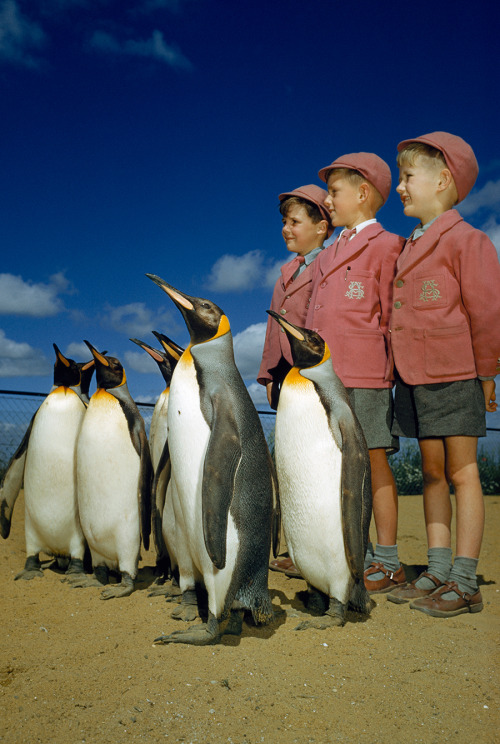By: Kathryn Landis
Don’t get caught winging it! Follow these tips for a safe and healthy winter.
As the temperatures get colder, make sure you know how to stay warm. Wear warm winter clothes and plenty of extra layers, and listen for radio or television reports of travel advisories issued by the National Weather Service.
Play it Safe Outdoors
 Unfortunately, we don’t have downy penguin coats to keep warm. When going outside, do not leave areas of the skin exposed to the cold. Learn to recognize the symptoms of hypothermia and frostbite.
Unfortunately, we don’t have downy penguin coats to keep warm. When going outside, do not leave areas of the skin exposed to the cold. Learn to recognize the symptoms of hypothermia and frostbite.
When exposed to cold temperatures, your body begins to lose heat faster than it can be produced. Prolonged exposure to cold will eventually use up your body’s stored energy. The result is hypothermia, or abnormally low body temperature. Body temperature that is too low affects the brain, making the victim unable to think clearly or move well. This makes hypothermia particularly dangerous because a person may not know it is happening and won’t be able to do anything about it. Victims of hypothermia are often elderly people with inadequate food, clothing, or heating, babies sleeping in cold bedrooms, and people who remain outdoors for long period.
Warnings signs of hypothermia include shivering, exhaustion, confusion, fumbling hands, memory loss, slurred speech, and drowsiness. If you notice any of these signs, take the person’s temperature. If it is below 95°, the situation is an emergency—get medical attention immediately.
Visit CDC’s Outdoor Safety page for more information
Driving in a Winter Wonderland
Driving in severe winter weather can be dangerous and lead to accidents. Be sure to prepare a winter emergency kit for your car. Include blankets, a flashlight, a shovel, an ice scraper, water and snacks, and a first aid kit. Make sure your car is serviced and has a full gas tank before a storm. Consider signing up for an all-weather driving course in your area to practice winter driving skills, and know what to do if you ever become stranded in your car.
Huddling is great, but may not be enough to keep you warm when winter weather hits. Learn how to prepare your home for winter weather and save on your electricity and heating bills. Insulating walls and attics, and putting weather-strips on doors and windows keeps heat inside and maximizes warmth.
Handle Heating Equipment Safely
When you need to warm up, take proper precautions and review instructions before handling heating equipment and fires. Have your heating system serviced by a qualified technician every year. Make sure fireplaces, wood stoves, and other combustion heaters are properly vented to the outside. Never leave children unattended near a space heater. Learn more by reading CDC’s Indoor Safety Guide.
Don’t Forget Your (Other) Furry Friends
 If you have pets, make sure to bring them indoors. If you cannot bring them inside, provide adequate shelter to keep them warm and make sure they have access to unfrozen water.
If you have pets, make sure to bring them indoors. If you cannot bring them inside, provide adequate shelter to keep them warm and make sure they have access to unfrozen water.
Stay Chill around Ice
Walking on ice is dangerous and can cause serious falls on driveways, steps, and porches. Use rock salt or sand to melt the ice on driveways and sidewalks.If walking on ice can’t be avoided, walk like a penguin! Bend your back slightly and point your feet out – this increases your center of gravity. Stay flat-footed and take small steps or even shuffle for more stability. Keep your arms out to your sides to help balance.
Support Each Other
 Although it’s best to not leave the nest when severe winter weather hits, maintain your support network by checking in with family, friends and neighbors. Your neighbors might need extra help before and after a winter storm, so check in to make sure everyone is okay and has adequate heat. Use CDC’s PSAs and Podcasts to help spread winter preparedness messages. We’re all in this together!
Although it’s best to not leave the nest when severe winter weather hits, maintain your support network by checking in with family, friends and neighbors. Your neighbors might need extra help before and after a winter storm, so check in to make sure everyone is okay and has adequate heat. Use CDC’s PSAs and Podcasts to help spread winter preparedness messages. We’re all in this together!
Know how to prepare your ‘nest’ for upcoming winter weather using CDC’s Winter Weather Checklists.


 One of the most infuriating things about being a paleontologist is being able to study some of the coolest organisms that have ever inhabited the Earth, yet never being able to see one in life.
One of the most infuriating things about being a paleontologist is being able to study some of the coolest organisms that have ever inhabited the Earth, yet never being able to see one in life.





